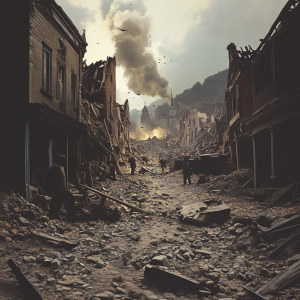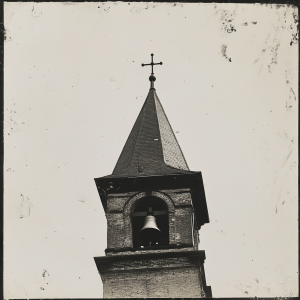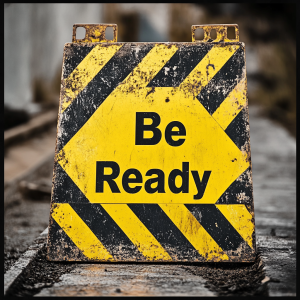
The New Madrid Fault Line earthquake was devastating in the 1800’s
Hidden beneath the soil of the American Midwest lies one of the most dangerous and unpredictable geological features in the country: the New Madrid Fault Zone. Stretching across parts of Missouri, Arkansas, Tennessee, Kentucky, and Illinois, this fault is no small crack in the ground. It’s a sprawling network of seismic activity that could, at any moment, decide to shake the region—and the entire nation—to its core. And unlike the San Andreas Fault out west, the New Madrid doesn’t have Hollywood hype or a catchy disaster movie. But what it does have is the potential to bring our modern way of life to a grinding halt.
A History Written in Shaking Ground
The New Madrid Fault earned its reputation back in the winter of 1811–1812, during a series of three devastating earthquakes that left the land reeling. Centered near present-day New Madrid, Missouri, these quakes were so powerful that they permanently altered the landscape. Rivers rerouted, entire forests were swallowed by the earth, and the Mississippi River famously ran backward for a time. Think about that: a river the size of the Mississippi reversing course. If that doesn’t give you goosebumps, nothing will.
And it wasn’t just the Midwest that felt it. The shaking was reported as far away as New York City and Boston. Church bells rang, buildings swayed, and people were left wondering if the world was ending. It’s estimated that the largest of these quakes had a magnitude of 7.5 to 8.0—enough to cause catastrophic damage even by today’s standards.
Where It Runs and Why It Matters
The New Madrid Fault Zone runs roughly 150 miles through the heart of the Midwest. Its epicenter lies near the town of New Madrid, Missouri, but the fault doesn’t stop there. It stretches across southeastern Missouri and northeastern Arkansas before snaking into western Tennessee and parts of Kentucky and Illinois. Unlike the faults you hear about in California, the New Madrid Fault lies in a region where buildings, bridges, and infrastructure were never designed with earthquakes in mind.
This isn’t just a “local” issue. The region it affects is home to major transportation arteries: highways, railroads, and pipelines that keep goods flowing across the country. If a major earthquake struck, these vital supply lines could be severed, causing disruptions that ripple far beyond the Midwest. Food, fuel, and materials wouldn’t just stop moving—they’d vanish from store shelves faster than toilet paper in 2020.
The Damage If It Happens Again

The New Madrid earthquake was so strong it caused church bells to ring as far away as Boston
Geologists say the New Madrid Fault is overdue for another big event. A quake similar to the ones in 1811–1812 would devastate the region today. It’s not just about cracked roads and toppled buildings (though there would be plenty of that); it’s the cascading effects. Power grids would fail, water supplies would be compromised, and millions of people could be displaced. FEMA has warned that a New Madrid earthquake could rival the costliest natural disasters in U.S. history, leaving a recovery effort that could take years.
But it’s not just the physical damage that’s worrying. It’s the reach. A major quake here wouldn’t just be felt in Missouri or Tennessee—it would send shockwaves as far as the East Coast. Imagine feeling an earthquake in Washington, D.C., or Atlanta and realizing it came from hundreds of miles away. That’s the power of the New Madrid Fault.
A Wake-Up Call for Preparedness
What makes the New Madrid Fault so unsettling is its silence. Unlike faults that rumble regularly, this one stays quiet—until it doesn’t. And that silence can lull us into a false sense of security. But here’s the truth: just because it hasn’t happened in our lifetime doesn’t mean it won’t. In fact, history tells us we’re due for another major quake.
For preppers, this is the kind of scenario that demands attention. It’s not about living in fear; it’s about living ready. Have a plan. Stockpile essentials. Know how you’d get by if supply chains were suddenly cut off. And while you’re at it, take a moment to appreciate the importance of community. Because when the ground starts shaking, it’s the people you’ve prepared with—and for—that will make all the difference.

Be ready for another earthquake in the New Madrid Fault Zone
The Bigger Picture
The New Madrid Fault isn’t just a geological feature; it’s a reminder of our vulnerability. It teaches us that no matter how advanced our society becomes, we’re still at the mercy of forces far beyond our control. But it also reminds us of our resilience. History has shown that people can adapt, rebuild, and thrive—even in the face of unimaginable disaster.
So, let this be a call to action. Prepare not just your pantry, but your mindset. Because when the New Madrid Fault decides to wake up, it won’t be subtle. But you? You’ll be ready, steady, and two steps ahead. Just make sure your bug-out bag is earthquake-proof—no one wants to be the person caught holding a can opener with no cans.
Join our Facebook Group!


